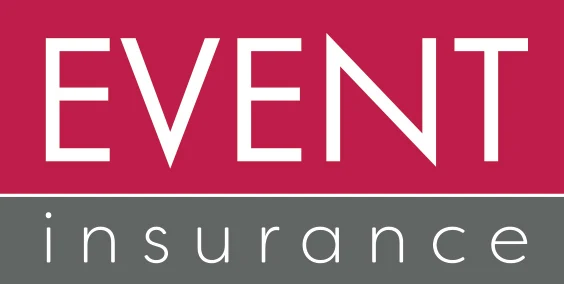Insurance
Everything You Need to Know About Health Insurance
Health insurance plays a critical role in the well-being of individuals and families by helping cover the costs of medical care. In this comprehensive guide, we’ll explain what health insurance is, how it works, the different types of plans available, and their key features. We’ll also explore important related concepts like deductibles, copays, and coinsurance. By the end, you’ll have a thorough understanding of health insurance and how it can help protect your financial health.
What Is Health Insurance?
In its simplest terms, health insurance is a contract between an insurance provider and a consumer where the provider agrees to cover some or all medical expenses incurred by the consumer in exchange for regular premium payments.
Specifically, health insurance pays for medical services and helps offset the costs of injuries, illnesses, childbirth and preventive care. Plans may cover doctor visits, prescription drugs, testing and screening, surgeries and hospital stays among other services.
In the U.S., most people obtain health insurance through their employers. Others purchase individual or family plans directly from private insurers or government programs. The goal is to have financial protection from unpredictable medical bills that could otherwise lead to debt or bankruptcy.
How Health Insurance Works
In the U.S., there are two primary ways people secure healthcare coverage:
- Employer-Sponsored Plans: About half of Americans receive health benefits through their jobs, with companies partially subsidizing premium costs.
- Individual/Family Plans: Self-employed or unemployed individuals buy plans directly from private insurers or public exchanges created under the Affordable Care Act (ACA).
Plans are usually renewed annually with open enrollment periods. Premiums are paid monthly by the policyholder to the insurance company in exchange for coverage. When medical services are received, the provider files claims to the insurer for reimbursement.
Depending on the specific plan, out-of-pocket costs may include deductibles, copays and coinsurance which are discussed later. The insurer’s network of healthcare facilities and providers must generally be used to receive in-network benefits and rates.
Types of Health Insurance Plans
There are multiple types of health insurance plans available in the U.S. marketplace. The most common include:
- Health Maintenance Organizations (HMOs): Require using in-network providers and obtaining referrals for specialist care.
- Preferred Provider Organizations (PPOs): Offer flexibility to use out-of-network providers at a higher cost.
- High-Deductible Health Plans (HDHPs): Pair lower premiums with higher deductibles that qualify for Health Savings Accounts.
- Point-of-Service (POS) Plans: Blend HMO and PPO coverage by requiring PCP referrals but allowing out-of-network use.
- Federal Plans: Programs like Medicare, Medicaid and CHIP provide government-funded coverage options.
Consumers should research plans thoroughly to determine network access, covered benefits and associated costs before enrolling.
What Are Deductibles, Copays and Coinsurance?
These three concepts define how out-of-pocket healthcare costs are divided between the insurer and policyholder:
- Deductible: The set amount an insured pays yearly before most coverage begins. Plans may have separate deductibles for certain services.
- Copay: A fixed dollar amount paid per office visit, prescription or other service received, even after the deductible is met.
- Coinsurance: The percentage of a medical bill paid by the insured, usually 10%-30%, calculated after the deductible and until annual limits.
By understanding these policy features, individuals can find a plan balancing affordability with their expected healthcare usage and risk tolerance for costs.
High-Deductible Health Plans (HDHPs)
A type of cost-conscious health insurance gaining popularity are high-deductible health plans (HDHPs). As their name suggests, HDHPs offer lower monthly premiums than traditional plans but require account holders to meet a higher annual deductible.
For 2023, HDHPs must have a minimum deductible of $1,500 for self-only coverage or $3,000 for family plans. Total out-of-pocket costs are capped federally at $7,050/$14,100.
A key benefit is that HDHP enrollees can open and contribute pre-tax funds to a Health Savings Account (HSA) to cover medical bills. Contributions are deductible from taxable income, funds grow tax-free and qualified withdrawals remain untaxed as well. This can help offset the upfront deductible costs.
Federal Health Insurance Plans
In addition to private plans, the federal government operates programs extending healthcare coverage for older adults, low-income families/individuals and people with disabilities:
- Medicare: For those 65+ and younger people with disabilities or specific conditions.
- Medicaid: Joint federal-state program covering low-income groups including children, pregnant women, elderly and disabled.
- Children’s Health Insurance Program (CHIP): Insures kids in households above Medicaid thresholds.
Federal plans often partner with private insurers for administrative support. Premiums and cost sharing are income based to make care affordable. These programs broaden access to essential medical services.
What Are Copays, Deductibles and Coinsurance?
All health plans require sharing certain medical expenses between the insurer and policyholder:
- Deductible: The initial annual amount owed by the insured before most coverage kicks in, averaging $4,000-$6,000 individually.
- Copay: A fixed fee charged per doctor visit, prescription or service, typically $10-$75. Applies after the deductible.
- Coinsurance: The percentage of a bill the insured pays after satisfying their deductible, usually 20%-30%. Applied until yearly out-of-pocket maximums.
Together these encourage careful medical utilization while protecting against high bills. Consumers weigh them against monthly premium costs when selecting coverage appropriate for their needs.
Getting Health Insurance
There are various ways to obtain health coverage depending on individual circumstances:
- Employer Plan: Enroll during open enrollment or within 30 days of becoming eligible.
- Individual Marketplace: Apply through government exchange网站 during open enrollment fall through winter periods.
- Medicaid/CHIP: Apply any time based on state income/status eligibility criteria.
- Cobra: Extend former employer plan up to 18 months post-job loss by self-paying premiums.
- Medicare: Automatically enroll at age 65 or if younger and disabled with certain conditions.
- Short-Term Plans: Temporary private options under three months exempt from ACA rules.
Proper enrollment steps ensure prompt access to medical providers upon needing care.
Health Insurance FAQs
Some additional common questions about health insurance include:
- Is it mandatory to have coverage? Most states have no individual mandate but tax penalties were eliminated at federal level.
- How do pre-existing conditions affect plans? The ACA prevents health status from impacting rates or denying coverage.
- Can you be denied coverage? Individual plans can reject high-risk applicants pre-ACA but not preventatively due to health status thereafter.
- When does coverage start? New policies usually begin within a month subject to enrollment period and premium receipt timelines.
- How do plan networks work? Visit in-network providers for preferred tier benefits and rates, or pay more for out-of-network services.
- What’s not typically covered? Most policies exclude cosmetic procedures, weight loss services and long-term custodial care.
Thorough research avoids surprises by understanding plan specifics, exceptions and individual rights and protections.
Final Thoughts
Access to health insurance provides critical financial protection in confronting the unpredictable costs of medical care. This overview explained what it is, common plan types, key components of deductibles and other cost sharing, eligibility factors and important considerations. With health costs continually rising nationwide, maintaining adequate coverage becomes ever more vital to individual and family well-being.







